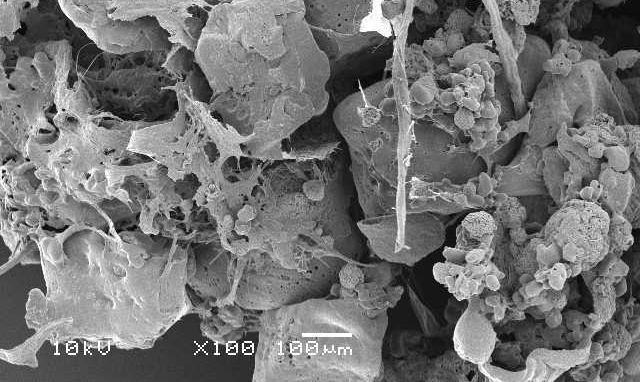Thesis | Injectable scaffold for bone regeneration
Research field(s): Tissue engineering, drug delivery and regenerative medicine.
Thesis title: An in situ Solidifying Injectable Scaffold Delivering BMP2 for Bone Regeneration.
Degree: PhD.
Supervisor: Prof. Kevin Shakesheff
Where are you undertaking/did you undertake your research?
I undertook my PhD research at the School of Pharmacy of the University of Nottingham in the UK. I worked in the Tissue Engineering Research Group, which is known for its multidisciplinary collaborations across various groups and research areas at the university and for placing a lot of emphasis on training and innovation (For e.g. two spin out companies have emerged from the innovative work we do in this group.)
What is your thesis about?
My thesis looked into developing an in situ solidifying biodegradable polymer based scaffold. In particular, my research investigated how to optimize the polymer based scaffold formulation so that it can be injectable at room temperature and then to solidify in order to produce scaffolds with appropriate mechanical properties to act as bone substrates and withstand the in vivo mechanical loading. My research also investigated the ability of the scaffold to act as a delivery system for growth factors that promote bone regeneration. I examined various methods of protein incorporation to optimize the delivery of a particular growth factor known as BMP2 from the injectable scaffold, and then examined the ability of the injectable scaffold to support cellular delivery, growth and differentiation towards the bone lineage under the influence of the released BMP2.
How did you get into this research?
I got interested in the field of tissue engineering while I was studying for a degree in Pharmacy where I undertook a number of modules in this area. My fascination with the subject motivated me to undertake a master project in tissue engineering, which enabled me to gain deeper knowledge about the field and subsequently led me to apply for a PhD.
Why is it important?
Bone and joint diseases pose a huge burden on health services, accounting for a significant proportion of all chronic conditions in the aging population. Currently available therapies such as allografts and autografts are limited by their availability, cost and infections, which in turn drive the continuous efforts to come up with new alternatives based on the principles of biomaterials and tissue engineering. Bone tissue engineering in particular relies on the use of three-dimensional scaffolds that act as matrices for new bone formation.

Cells growing on PLGA polymer scaffold that will differentiate into bone cells when BMP2 is released from the particles. (Image©Asma Boussahel)
The use of injectable scaffold to regenerate bone avoids the need for surgery and its accompanying complications. This is why my PhD research investigated scaffold formulation that could be injectable at room temperature and to solidify while attaining appropriate mechanical properties at body temperature after injection. For the scaffold to induce bone regeneration especially in larger non-union fractures, it is important for it to release bone inducing growth factors such as BMP2, which is why my PhD research focused on optimizing the formulation of the scaffold to encapsulate BMP2 and to release it at appropriate rates.
What is your contribution to your field of research?
My thesis presents the optimization of a novel injectable scaffold system. The polymer particles based formulation was optimized to produce an injectable paste at room temperature and to solidify at body temperature to produce a bone construct that supports the local mechanical pressure. My PhD research developed a novel method to encapsulate BMP2 into PLGA microspheres while maintaining its activity during encapsulation and after its release. My thesis presents a detailed examination of the injectable scaffold formulation that is composed of particles and growth factors and its potential to act as a delivery system for cells to promote bone regeneration.

About the Author